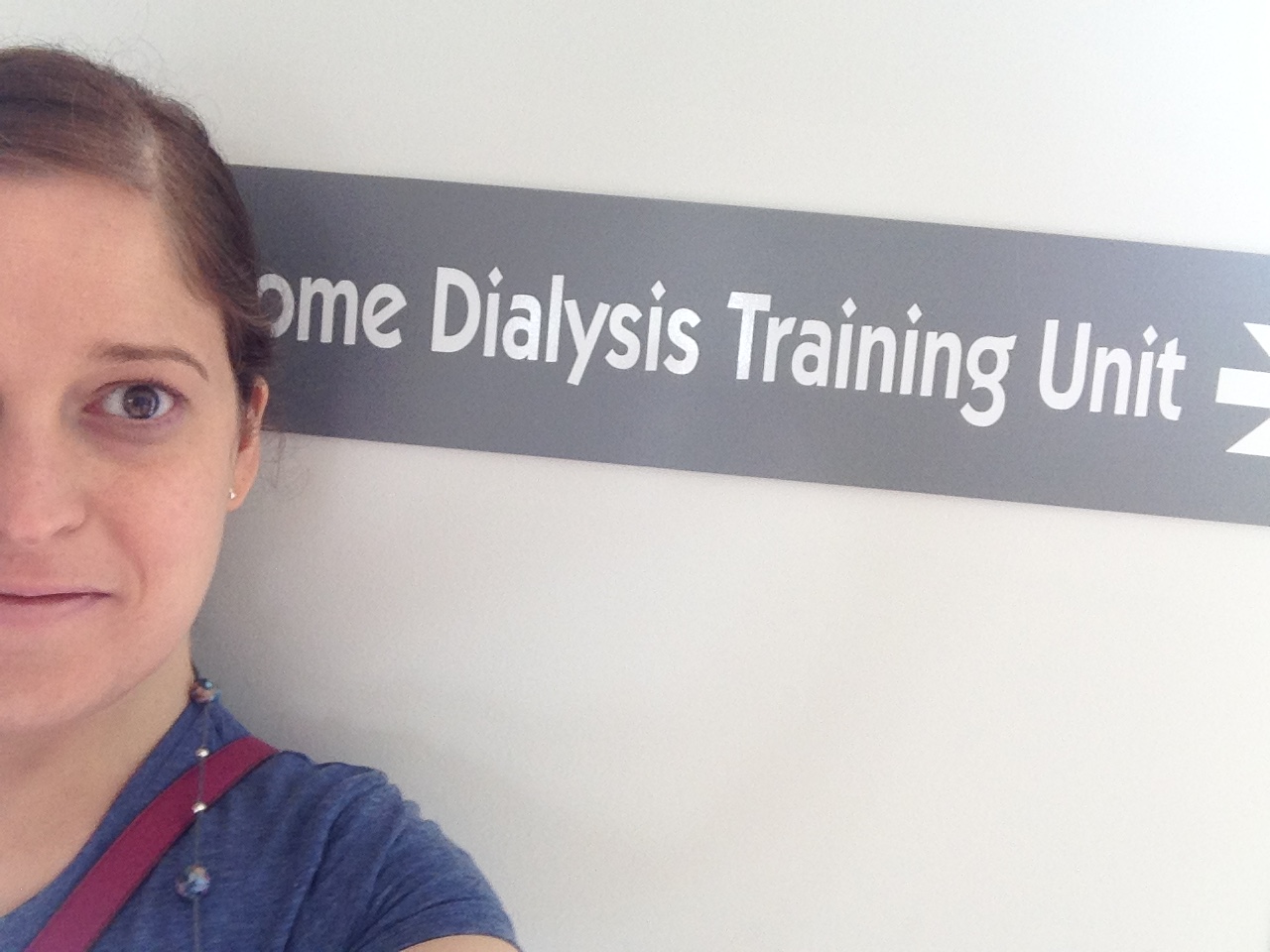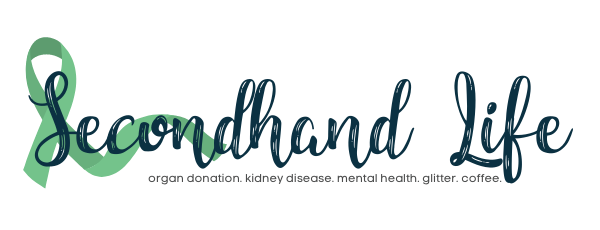On the 4th of August 2016, I went to have some routine bloods before a scheduled clinic appointment a few days later. I felt fine and went and wandered around the supermarket afterwards. But that evening, our landline rang. It almost never rings. On the other end was a registrar from the hospital. He explained that my bloods had shown a huge deterioration in my remaining renal function. My eGFR was down to 8, and my potassium was through the roof. He asked me to attend the rapid review clinic at 8:00am the next morning, so I could be urgently reviewed by the consultant on call.
When I went to clinic the next morning, my eGFR had declined even further, and was now 3. The staff all seemed a bit surprised by the fact I was not only still standing, but that I didn’t feel sick! I sat in the hospital cafe, drank tea and waited.
Several months prior to all of this, after long discussions with the pre-dialysis nurses and a psychologist, I made the decision to have (automated) peritoneal dialysis (APD). However because I’d been relatively stable, I didn’t have a PD access (Tenckhoff catheter) or any supplies at home. We thought we’d have more time to arrange that, but no such luck.
This meant that Thursday and Friday were rather frantic. It seemed like everybody rushed around trying to check that I was doing something resembling coping (HA!), schedule the Tenckhoff placement surgery and arrange for me to start dialysis as soon as possible!
As a side note, I’m so grateful that several hospital staff I know quite well were also there; D. and R. and A. and especially other D., thank you so much, I got through that day because of the four of you. I’ll never forget that. ❤
I had surgery on Friday morning (shortly after flooding the shower in the bathroom, much to the amusement of an elderly man visiting his wife on the ward opposite!) and had my first PD session that evening. All I’ll say for now is that it was rough. Doing a full session of overnight PD with a line inserted hours beforehand is far less than ideal. By the time I was discharged on Monday morning I’d had three treatments. This meant I was stable enough to go a further week without dialysis until I could attend a satellite unit to be trained to treat myself at home.
In all honesty, I don’t remember a lot about the week in between. I felt much sicker then than I did before and spent most of the time asleep.
I remember worrying about the training. Maybe it would be too hard? What if I couldn’t learn it and had to do haemodialysis instead? What if it didn’t work? I knew that the sooner I learned how to manage PD at home, the sooner I could find some normality again, so I really wanted to be able to do this.
I’ll write about the training in more detail soon, but it turns out, I needn’t have worried about it. After the first of four training days, I remember leaving the hospital thinking “Ok. So this is what I have to do. There’s absolutely no reason why I can’t do this. It actually might be ok.”

(2.4.2018)
I didn’t initially include this when I wrote this post, because I didn’t think of it, but now, almost a year later, I want to go back and add in something else that really helped me during this period of my life. This Youtube video. Perspective is an amazing thing, and mine certainly changed when I watched Maddy, even if she didn’t know it yet.
